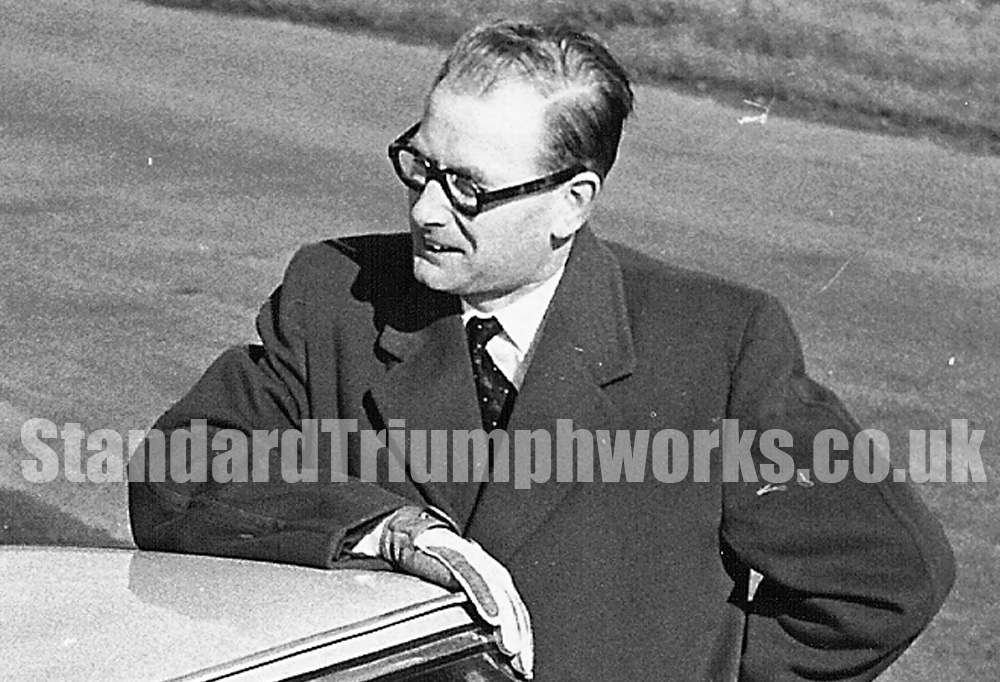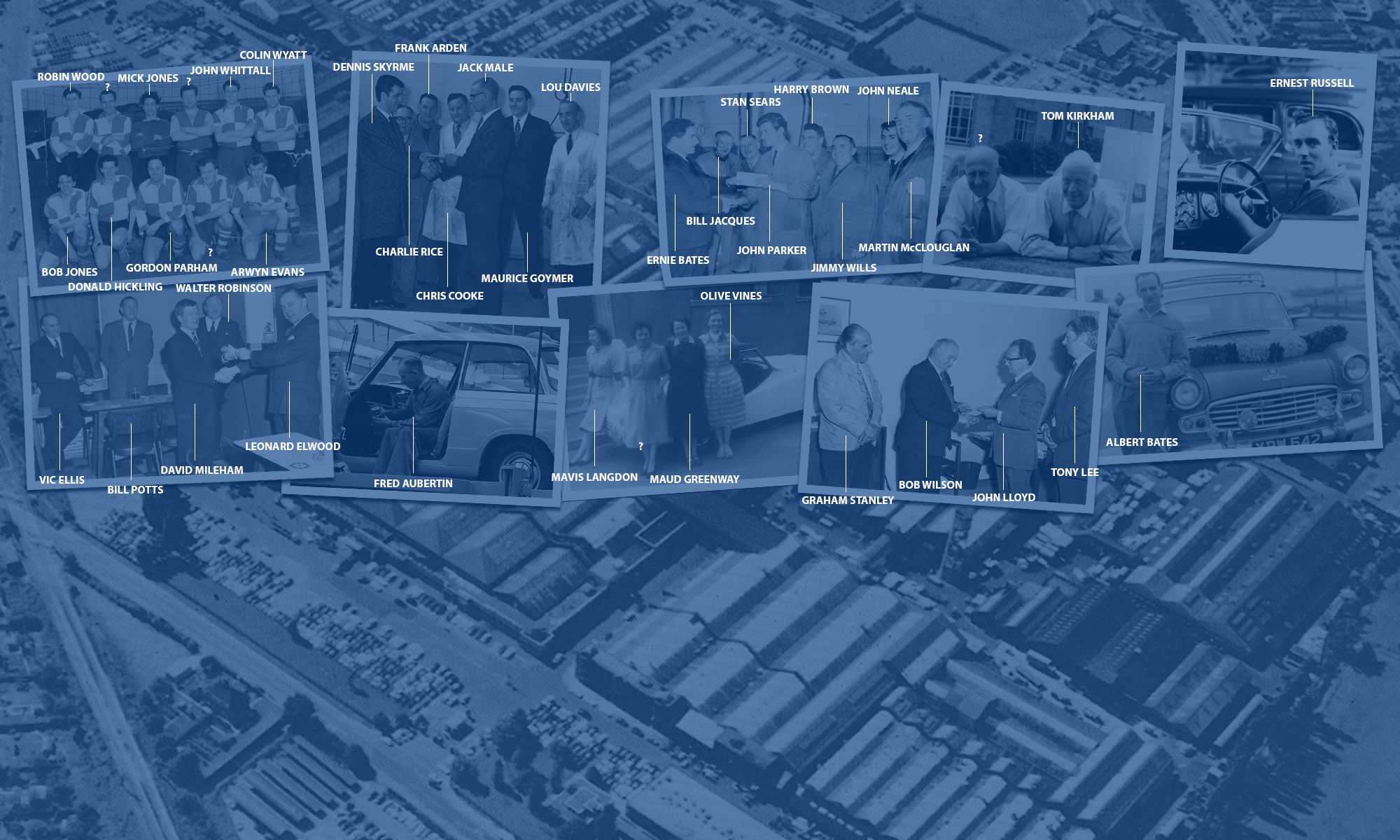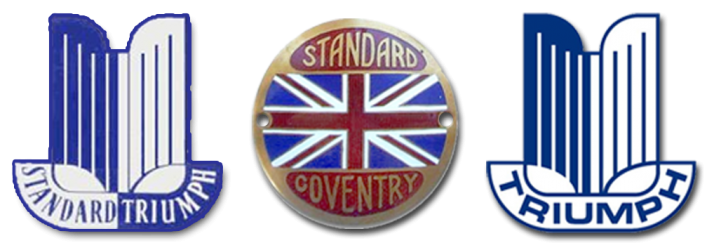We’d love to hear your memories of Harry Webster to provide a new and unique tribute to Harry, on this the anniversary of his birth. Today Harry would have been 102. Please get in touch if you can add any information. Thank you.

Harry Webster, who died on February 6 aged 89, was a much-admired and respected automotive engineer whose team inspired the birth of successful Triumph sports cars such as the TR2 family, the Spitfire and the Stag, and was also responsible for the Herald, Vitesse, 2000 and 1300 family car ranges; in the same period, he supported the building of special cars which raced successfully in the Le Mans 24-Hour race.
Although all these cars have now become icons of the classic car movement, Webster always insisted that this was never the intention when they were designed.
He once remarked: “Can you imagine a product planning proposal of the 1950s and 1960s saying that: ‘Finally, in making this proposal, I expect to receive an avalanche of greetings on my 80th birthday’. After all, I was only doing my job.”
Henry George Webster was born on May 27 1917, and educated at Welshpool County School. Aged 15 he was apprenticed to the Standard Motor Company in Coventry. After spending six years in Standard’s aircraft engineering operation as an inspector during the Second World War, he returned to the chassis design department in Coventry in 1945 and rose rapidly through the ranks.
By 1948 he was chief chassis engineer, and from 1952 was responsible for the design and refinement of the Triumph TR2 sports car which, along with its successors, was a great sporting, commercial and export success.
Having become director of engineering in 1957, Webster assembled an enthusiastic team which produced a series of charismatic new models to near-impossible development schedules, even though investment finance was always very limited.
It was Webster who discovered the mercurial little Italian stylist Giovanni Michelotti in 1957, signed him up as a consultant to Standard-Triumph and ensured that a new generation of Triumphs would have much more flair than their ancestors.
Webster (a fast and enthusiastic driver) would often drive from Coventry to Turin and back in a weekend to confer with Michelotti about future products.
Because Webster was so successful with his new products, and could always convince his bosses (Alick Dick until 1961, Stanley Markland and Donald Stokes thereafter) of their worth, that generation of new Triumphs showed much innovation. In 1959 there were several types of new Herald, with a taxi-like turning circle. The 2000 saloon brought real refinement to the middle-class sector, while the TR5 was the first British sports car to have fuel injection as standard equipment.
At the same time Webster’s team produced TRS racing sports cars which won the Team Prize at Le Mans, and later developed sleek, very fast little Spitfires which also won their capacity classes at Le Mans.
Webster was director of engineering at Standard-Triumph for more than a decade. After the formation of British Leyland he was moved to Longbridge to bring order to the faltering engineering operation at Austin-Morris.
But his six-year term was hampered by a lack of corporate vision and by industrial action, so in 1974 he moved on to become group technical director of automotive products in Leamington Spa. He retired in 1982, then was chairman of SKF Steel UK for five years.
A modest man, Webster was astonished to become an icon of classic car enthusiasts. Three years ago, when the two oldest TR2s of all were reunited, he was enormously proud to have them parked outside his house at Kenilworth for commemorative photographs to be taken.
So popular was he among his former colleagues at Standard-Triumph that a thriving appreciation society was founded in his honour.
He was appointed CBE in 1974. Harry Webster married, in 1943, Peggy Sharp. She and their daughter predeceased him.
Published: The Independent 17 February 2007
Henry George Webster, automotive engineer: born Coventry 27 May 1917; apprentice, Standard Motor Company 1932-38, assistant technical engineer 1946-48, chief chassis engineer 1949-55, chief engineer 1955-57; director of engineering, Standard-Triumph International 1957-68; technical director, Austin Morris Division, British Leyland Motor Corporation 1969-74; CBE 1974; group technical director, Automotive Products 1974-82; married 1943 Peggy Sharp (died 2003; one daughter deceased); died Kenilworth, Warwickshire 6 February 2007.
You’d never realise it today but the Triumph Herald – launched in 1959 – was the first small, affordable British car actually to look chic. Its sharp, sleek lines came from Italy, and it was available as a racy coupé and a stylish convertible, as well as a two-door saloon. There was nothing else quite like it, especially at the £702 price.
For the speed with which the car was designed, delighted consumers had a mild-mannered engineer from Coventry to thank. But Harry Webster had a guilty secret. He had reverted to pre-war technology to create the Herald, which had a stout separate chassis to support its La Dolce Vita looks. In motoring terms, such things had gone out with the Ark, replaced by integral “monocoque” body/chassis units. But the investment needed to manufacture them was huge, and the Standard- Triumph company was a financially threadbare organisation.
So the resourceful Webster decided to use a chassis but then gave it modern, all-independent suspension and, of course, those absolutely fabulous metal clothes. Such ingenious thinking defined Webster’s reign in the 1960s and 1970s as one of Britain’s leading automotive engineers. It gave Triumph a sexy image and, when it became part of British Leyland in 1968, an amazing influence for such a relatively minor car industry player. “Our rivals were always enormously bigger than we were,” recalled Webster:
We had to spot niches in the market and say: “This is where a car will sell for a little bit more than the others.” We always looked for the difference between what they were doing and what we could do. We couldn’t compete head-on.
The approach led to a roll-call of fondly remembered classic cars: the sporty Triumph Vitesse, Spitfire and GT6, the 2000 executive car, the BMW-rivalling Dolomite, the glamorous Triumph Stag, and the long-running Triumph TR roadsters. All of these were styled by an Italian, the designer Giovanni Michelotti, who became a close friend of Webster’s, and who helped give a desirable sheen to Triumph’s sometimes rudimentary mechanical hardware. Webster often drove – hard – to Turin in a prototype, discussed his plans with Michelotti, and charged back to Coventry, all in a weekend.
Harry Webster was just 15 in 1932 when he left Coventry Technical College for an apprenticeship with the Standard Motor Company. He worked in the technical engineering department of the company, a manufacturer of mundane family cars, and during the Second World War he toiled in its aero-engine department. Later, in 1949, he was put in charge of chassis development under Ted Grinham. Webster loved high-performance cars and motor racing, Grinham did not, and the two frequently clashed.
However, after acquiring the Triumph brand in 1945, Standard had decided to enter the sports-car market, and Webster was in his element refining the handling and roadholding of what became the Triumph TR2, under a tight budgetary regime and the glare of the company’s tyrannical chairman Sir John Black. When Grinham retired in May 1957, Webster became top engineering dog, immediately setting about replacing the Standard 8/10 cars with the cunningly conceived Herald.
In 1969, a year after the formation of British Leyland (Triumph became a division of Leyland Trucks in 1961, the Standard name axed soon afterwards), Webster’s considerable efforts were rewarded with a promotion to oversee the engineering of the entire car-making conglomerate.
This entailed a transfer from Coventry to Longbridge, Birmingham, but it also included confronting another colossal figure in British car design: Alec Issigonis. His Mini and 1100/1300 cars were brilliant engineering achievements, and deservedly popular, but were unprofitable. Webster had the unenviable task of sidelining Issigonis, putting him in charge of British Leyland’s research arm, so leaving Webster free to plan the corporation’s new range of family models.
There were two of these, the Morris Marina and the Austin Allegro, but neither proved a success for a variety of technical and design reasons. The consensual nature of policy decisions in the political furnace of British Leyland at the time was new to Webster.
In a turbulent five years, he made plenty of enemies in his attempts to make BL’s cars emulate the market leaders from Ford, with a little bit of that old Triumph “cool” thrown in for good measure. In 1974, he left the company for the Leamington Spa-based Automotive Products (AP), a component-maker; a year later, the bankrupt British Leyland was nationalised. Webster retired from AP in 1982.

